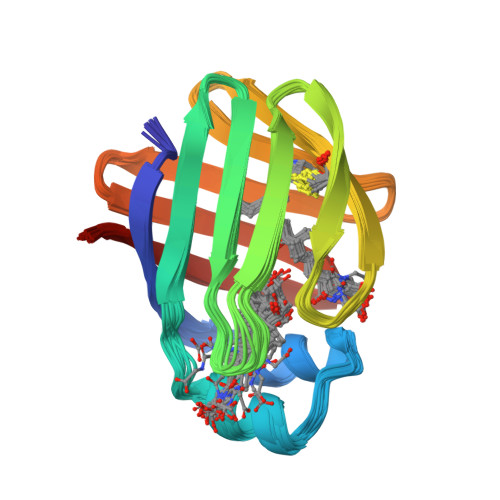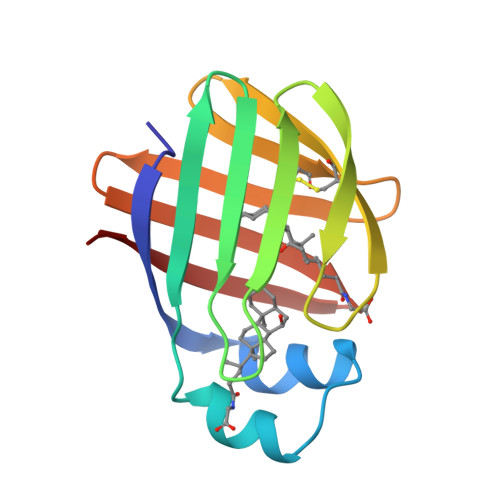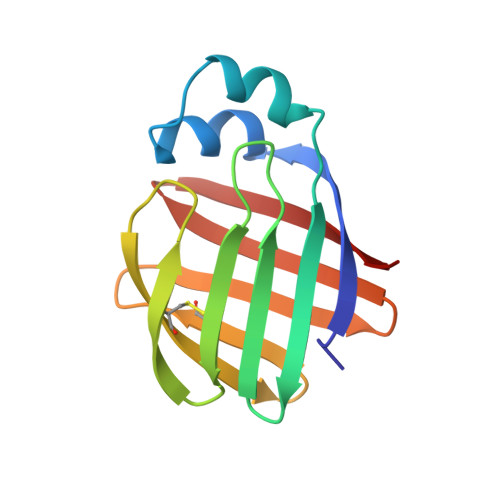A disulfide bridge allows for site-selective binding in liver bile acid binding protein thereby stabilising the orientation of key amino acid side chains.
Tomaselli, S., Assfalg, M., Pagano, K., Cogliati, C., Zanzoni, S., Molinari, H., Ragona, L.(2012) Chemistry 18: 2857-2866
- PubMed: 22298334
- DOI: https://doi.org/10.1002/chem.201102203
- Primary Citation of Related Structures:
2LFO - PubMed Abstract:
The presence of a disulfide bridge in liver bile acid binding protein (L-BABP/S-S) allows for site-selective binding of two bile acids, glycochenodeoxycholic (GCDA) and glycocholic acid (GCA), differing only in the presence of a hydroxyl group. The protein form devoid of the disulfide bridge (L-BABP) binds both bile salts without discriminating ability. We investigate the determinants of the molecular recognition process in the formation of the heterotypic L-BABP/S-S complex with GCDA [corrected] and GCA [corrected] located in the superficial and inner protein sites, respectively. The comparison of the NMR spectroscopy structure of heterotypic holo L-BABP/S-S, the first reported for this protein family, with that of the homotypic L-BABP complex demonstrates that the introduction of a S-S link between adjacent strands changes the conformation of three key residues, which function as hot-spot mediators of molecular discrimination. The favoured χ(1) rotameric states (t, g(+) and g(-) for E99, Q100 and E109 residues, respectively) allow the onset of an extended intramolecular hydrogen-bond network and the consequent stabilisation of the side-chain orientation of a buried histidine, which is capable of anchoring a specific ligand.
Organizational Affiliation:
Laboratorio NMR, ISMAC-CNR, Via Bassini 15, 20133 Milano, Italy.


















